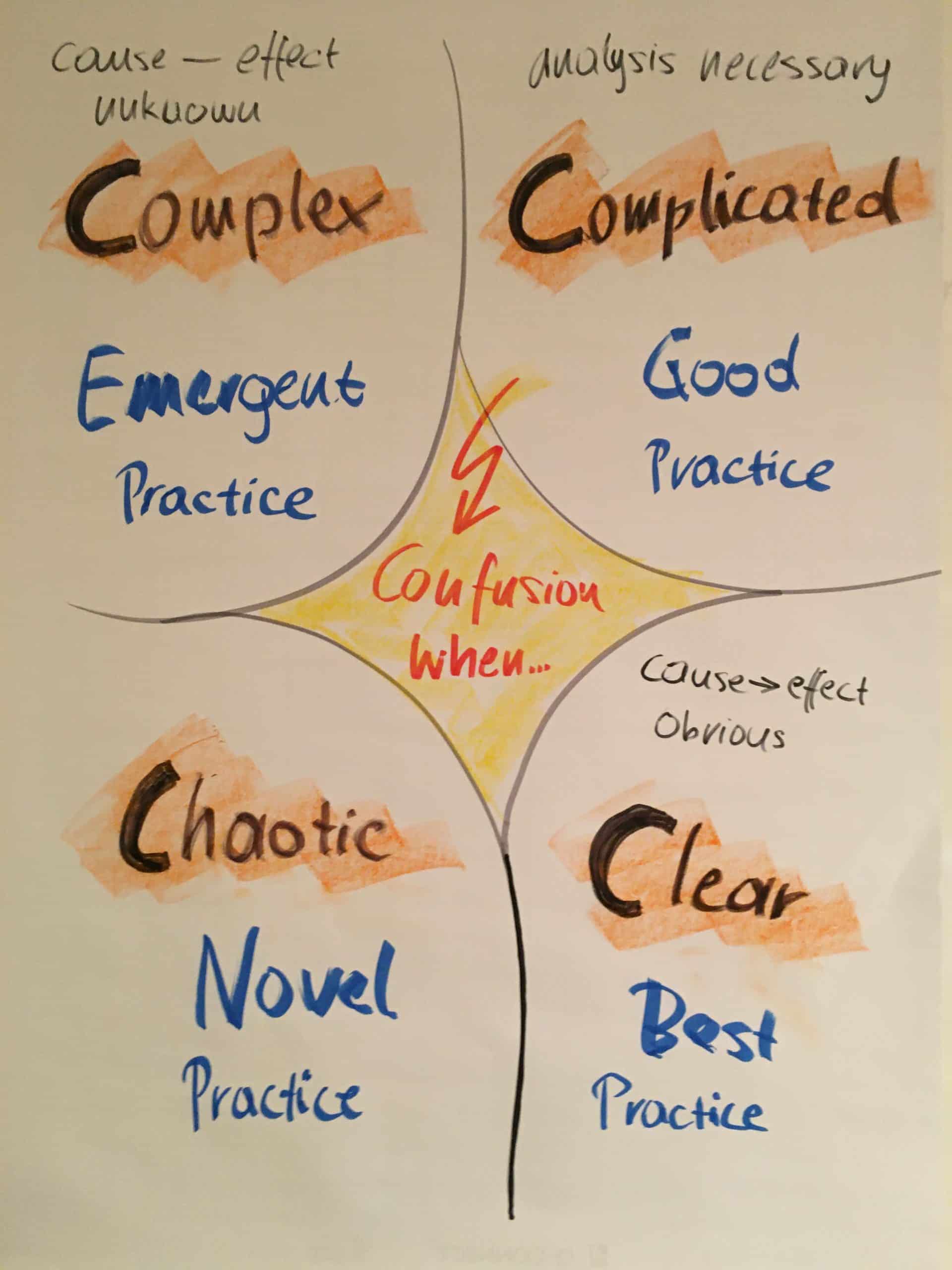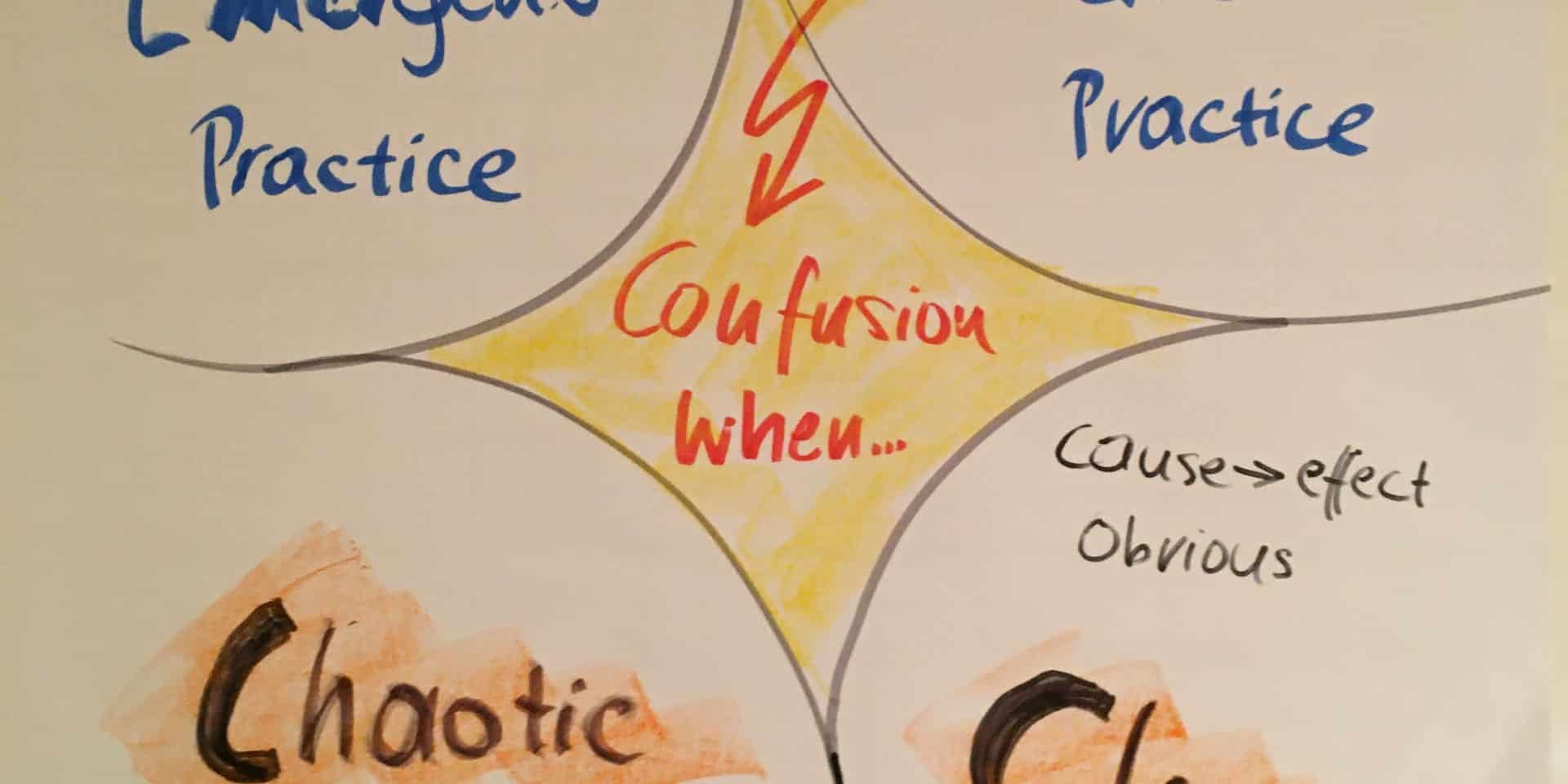Crises are mounting high - to be felt at all levels!
It is chiefly felt at company level: order books may be full, but parts are missing due to cut supply chains. In another case, staff may not not there to work them off. Further, demand may collapse; hopefully not forever, but drastically so. Margins cannot be upheld this way. The Cynefin model allows a more thorough analysis.

Problems on a more general level loom in the background. War against Ukraine, gas and electricity are scarce or expensive or both, inflation still remains nearly as highs as 10 percent, CORONA and long COVID have not been overcome, and all are just pushing the climate crisis to the back seat. Where it does not belong!
The situation is, in short, VUCA! Volatile, uncertain, complex (more on this below), ambivalent. But it has effects down to the shop floor level!
The Cynefin model warns against proven patterns, even best practices, or well established methods. Possibly these might lead to the further aggravation of the situation! The hoarding of scarce parts, raw materials and fuel leads to even more shortages! Broadening the base of suppliers, especially globally, is perhaps more sustainable. More control of presence (“No more home office!”) and adding fifty cents to retain employees, possibly makes them want even more, but somewhere else. Larger batches as a result of a reduction of variants may suddenly lead to a drop in demand …
Cynefin separates between circumstances and fosters an outlook onto the solution
Cynefin (Gaelic, pronounced Gnawin), or its author Dave Snowden, distinguishes between obvious, complicated, complex, and chaotic conditions. A condition is clear when it is simple, when cause and effect are obvious and can be addressed using valid best practices. Allow me a funny analogy: the board game Nine men’s morris has clear rules and simple way forward – whoever starts will win. A situation is complicated when it seems difficult, requires study and expertise, but certainly good practice can be trusted to lead to results. One more analogy: Sudoku (even when very difficult) – the rules are clear and strict logic finally solves it. If only after several attempts.
complex und chaotic: VUCA
Complex is a condition that is unknown, but one is aware of. Especially when different factors don’t just add up, but interact in a interwoven manner. Furthermore: own actions do not lead to clear consequences, but to perhaps unimagined ones. This distinction is truly important! Snowden states that cause and effect can thus only be grasped in hindsight and that the approach must be in probe – sense – respond. Another board game as an example: chess! The difference over the above mentioned games: there is an opponent who follows his own tactics. And who, on top of that, definitely reacts to one’s own moves.
Finally it gets chaotic: the situation becomes unknown in a way that cannot be understood. And certainly it will not be controllable with known methods, so called best practices. Firstly now, action is mandatory, leading to a completely new approach!
Confusion arises if and when ...


In particular, the author warns that confusion arises when condition and approach do not match! Especially in complex or even chaotic situations, well-known methods for solving problems do not lead to the goal; instead, there is a risk to retreat to the comfort zone and resort to routine!
Yet, it is not worth to shake up established routines, through unusual ways, such as agile methods. What matters there is not a fully misunderstood error culture, but rather a further reduction in ppm or dpm – that’s stressful enough.
Cynefin reinvents and expands agility
After all, in complex and chaotic situations it is important to vary approach and procedure. Here the concept of agility regains its original meaning beyond the sphere of software development – or is expanded. It’s about, even if it sounds cynical, to raise the creative potential of crises.



